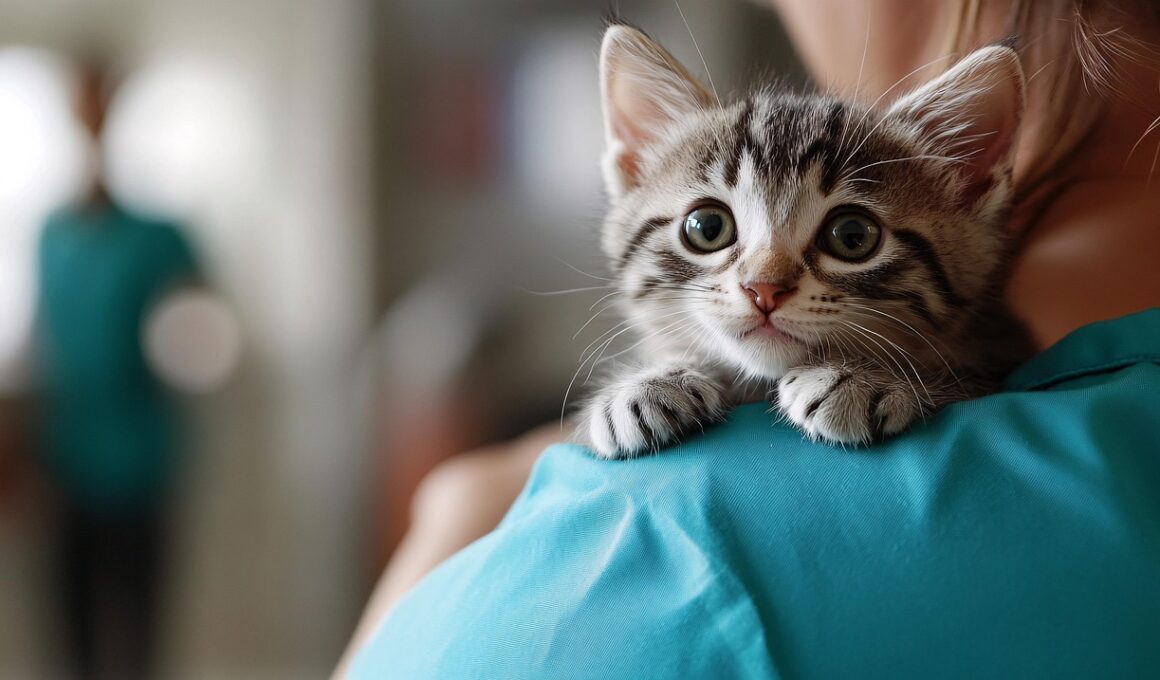Vet Networks and Cat Rescue: Building Lifesaving Alliances
In the world of animal rescue, no partnership is more vital than that between cat rescues and veterinary networks. These partnerships enhance the overall welfare of cats in need. This collaboration ensures that rescued felines receive immediate care and comprehensive medical support. When shelters partner with veterinary clinics, they gain a reliable resource for health assessments, vaccinations, and surgeries. This arrangement improves not only the animals’ health but also their chances of being adopted. Moreover, veterinarians often serve as advocates for these cats. They help educate the community about the importance of rescue and adoption. Furthermore, clinics can provide spay and neuter services, drastically reducing the number of unwanted litters. This plays a critical role in controlling the feral cat population. Without these partnerships, many cats would suffer without necessary medical attention. Every minor health issue has the potential to escalate into a serious condition without prompt care. Thus, building strong, mutually beneficial alliances between rescue organizations and veterinary professionals is essential for enhancing cat lives across the community.
The relationship between cat rescues and vets becomes particularly important in emergency situations. Cats often arrive at shelters in dire need of urgent veterinary intervention. These emergencies can range from severe injuries to urgent cases of illness. Having a pre-existing partnership ensures that veterinarians are familiar with the rescue’s protocols and requirements. This connection allows for quicker communication and action, which can save lives. Additionally, veterinarians may offer their services at reduced costs as part of their community outreach. This financial relief helps cat rescues allocate their limited funds more effectively. By saving on medical expenses, rescues can concentrate on shelter and rehabilitation activities. Moreover, when rescues collaborate with local veterinary practices, it fosters community awareness. Local vets can share success stories and advocate for adoptions, encouraging the public to support their initiatives. Such collaborations raise awareness about adoption and responsible pet ownership. Community involvement builds a supportive network around animal welfare. Therefore, these alliances are not just about individual case management, but they are about creating a culture of compassion and responsibility towards vulnerable animals. Transparency in partnership roles is also crucial.
Effective communication within the vet-rescue collaboration is paramount. Regular meetings can help integrate veterinary perspective into the rescue operations. These discussions can address ongoing health issues observed in local strays. Furthermore, veterinarians can provide training to rescue volunteers on basic health assessments. Well-informed volunteers can identify health problems early, increasing overall rescue success. Open lines of communication help both entities understand their goals and challenges. Rescues often have limited resources; recognizing these constraints helps veterinarians offer the most helpful services within those limits. Additionally, mutual feedback can help enhance operational protocols. For example, if certain treatments become ineffective or if there are frequent health issues in a particular area, those can be discussed in team meetings. With veterinary insights, rescues can better tailor their strategies. This collaborative approach elevates the standard of care provided to the cats. Ultimately, such cooperative frameworks not only improve animal health outcomes but also further educational efforts within the community, encouraging both adoptions and responsible cat ownership. These discussions may also lead to enhanced outreach programs to local communities.
Community Education and Outreach
When cat rescues work alongside veterinary offices, community education becomes a vital focus. These partnerships can facilitate workshops aimed at raising awareness about feline care and the importance of spaying and neutering. Attendees gain valuable knowledge that can prevent future abandonment and euthanasia rates. They learn about the benefits of adopting rather than buying pets, dispelling various myths about shelter animals. Vets can share vital information on topics such as feline health, dietary needs, and behavioral issues that may arise post-adoption. Community events can allow people to meet adoptable cats, interact with them, and ask questions from both volunteers and veterinary professionals present. This builds connections and trust. When the community is educated, it fosters responsible pet ownership, which is integral to decreasing the number of stray cats. Moreover, these programs encourage people to become more engaged in their local animal welfare initiatives. Collaborative workshops or events between rescues and veterinarians generate a positive buzz. They highlight how caring for animals leads to a healthier, more compassionate environment, ultimately promoting a rescue’s mission and encouraging adoption.
Financial support is another essential aspect of vet-rescue partnerships. By forming alliances, both parties can explore shared funding opportunities to enhance operations. Grants and sponsorships are often available for health service programs focused on community animal welfare. Collaborative proposals for grants can yield financial resources that benefit both veterinarians and rescues. This funding not only covers essential medical care, but can also assist with outreach efforts. Moreover, joint fundraising events can spark community interest and participation. Engaging the public shows the importance of veterinary partnerships, bringing in donations. Unique initiatives, such as spay/neuter clinics organized jointly, transform efforts into substantial community resources. Vets can offer special rates for these clinics, encouraging more pet owners to participate. This reduces unplanned litters, improving the overall welfare of community cats. Furthermore, co-hosted events may increase the visibility of both entities, attracting more supporters and potential adopters. Engaging community members in shared fundraising efforts fosters a sense of involvement and ownership in the success of local rescue initiatives. Overall, financial collaboration ensures sustainable support for ongoing operations.
Veterinary Care and Behavioral Support
Veterinary care enhances not only the physical health of rescued cats but also their behavioral well-being. When partnerships are built effectively, vets can provide critical insight into behavioral assessments for rescues. Many cats in shelters exhibit anxiety or fear, stemming from their previous living conditions. By integrating veterinary behaviorists into the rescue framework, volunteers can learn techniques to create a calmer environment for adopted cats. These insights are beneficial for successful adoptions and minimize returns of animals to shelters. Understanding feline behavior allows volunteers to work effectively with each cat’s specific needs. Rescue volunteers can learn stress-reduction methods during their interactions, improving the overall atmosphere. Additionally, therapists or behavior specialists can be invited to conduct seminars, enhancing educational efforts. Understanding cat behavior also assists in better matchmaking during adoptions, ensuring that each cat goes home with a suitable owner. Vets can also assist with rehoming strategies when needed. This multi-faceted care approach reinforces the strength of vet-rescue partnerships, enabling both parties to cultivate feline family connections effectively. The well-being of these animals is of utmost importance in these alliances.
Lastly, vet partnerships promote a culture of lifelong care for the cats that are adopted. The support doesn’t end at the moment of adoption. Vets can provide post-adoption health checks, making sure that families feel empowered to care for their new pets. Many veterinary practices offer complimentary first check-ups for adopted cats, strengthening these bonds. This ensures the cats receive ongoing medical care beyond initial treatments. Furthermore, veterinary practices can facilitate vaccination and wellness packages that cater to adopted cats. They may provide valuable educational material on cat care tailored to new pet owners. This continues to engage the community in animal welfare initiatives and reinforces the importance of regular health maintenance. Additionally, follow-up consultations can reassure adopters, addressing any concerns that may arise regarding cat behavior or health. A reliable veterinary connection encourages owners to return for future services, creating a sustained relationship for all. The overarching goal is to ensure all adopted cats lead happy, healthy lives. Therefore, the synergy created between cat rescues and veterinary professionals paves the way for transforming lives—both those of furry companions and future pet owners in the community.


